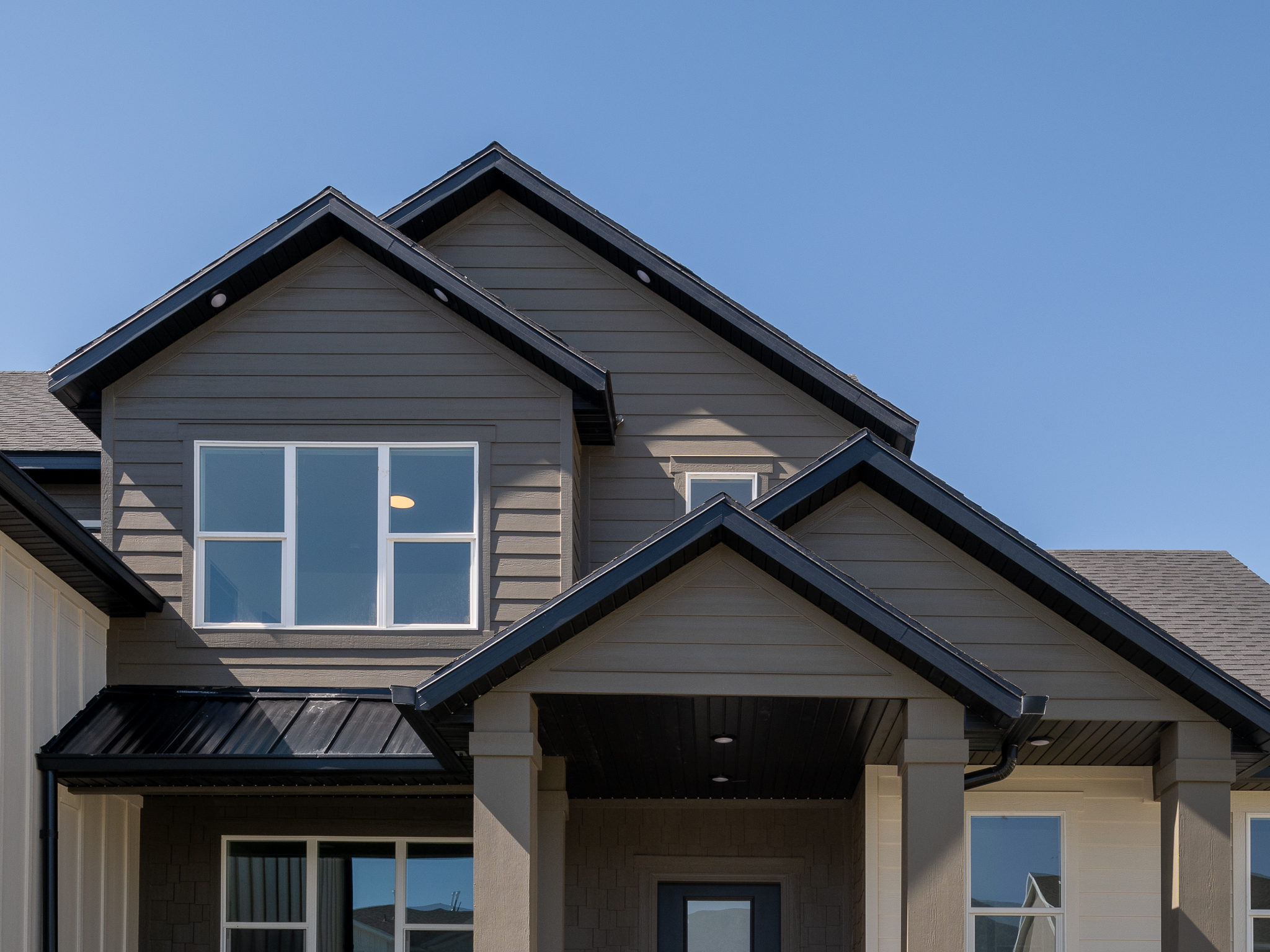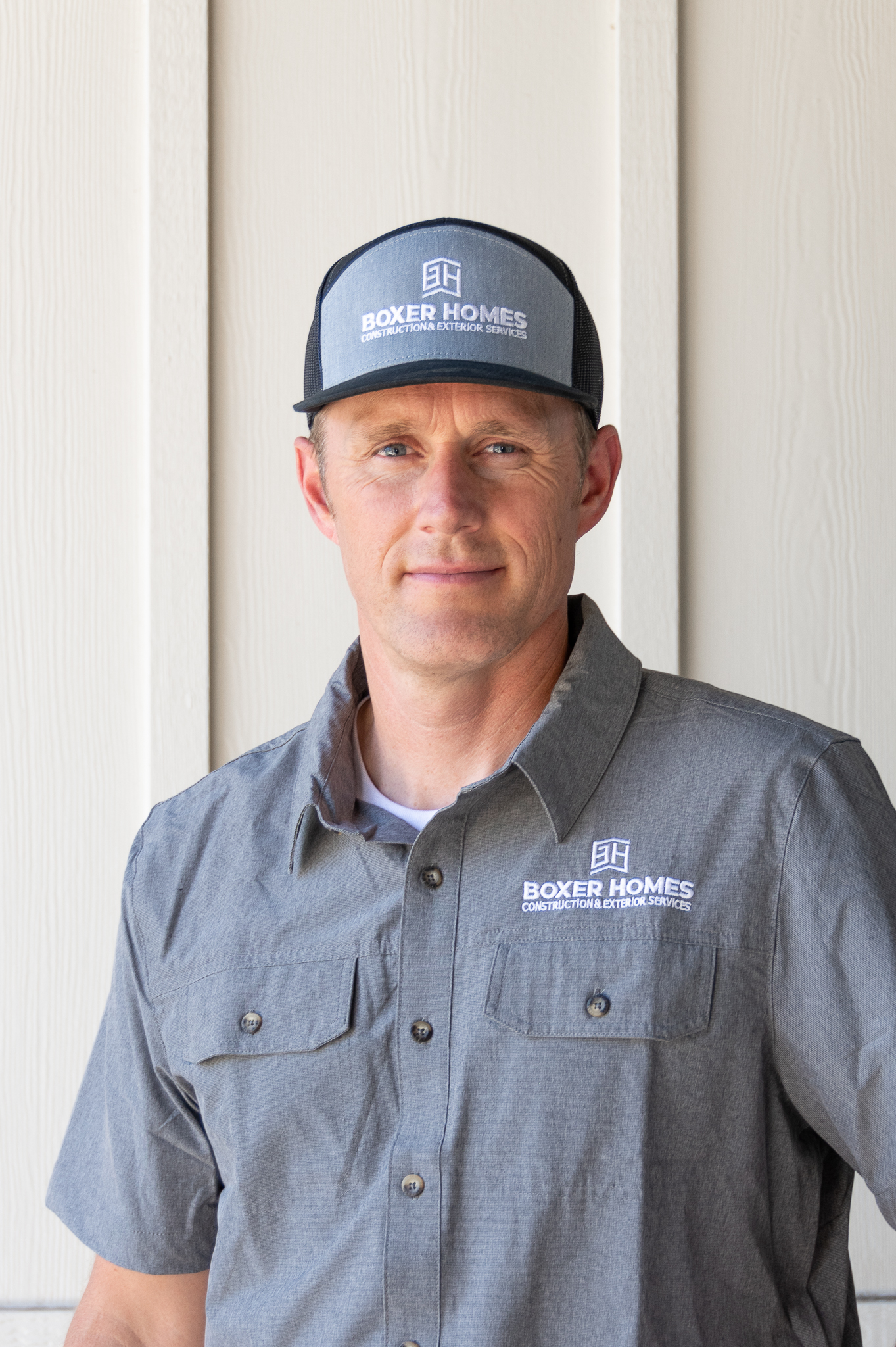Stucco vs. Vinyl Siding in Utah
BH Exterior & Design: Your Trusted Partner for Beautiful and Durable Exteriors
Get a Free Consultation

Spencer Townsend
General Contractor, BH Exterior & Design
Spencer brings over 15 years of hands-on experience in exterior design and construction. Their expertise and dedication to quality have made BH Exterior & Design a leader in Utah's stucco and vinyl siding services.
Article Outline: Stucco vs. Vinyl Siding
I. Introduction
- Importance of proper siding for home protection
- Brief overview of stucco and vinyl siding
II. Vinyl Siding: Pros and Cons
- Advantages of vinyl siding
- Potential issues with vinyl siding
- Vulnerability to extreme weather
- Color limitations and shrinkage problems
III. Stucco: A Durable Alternative
- Benefits of stucco siding
- Stucco's resistance to water damage
IV. Preventing Water Damage
- Proper installation techniques
- Importance of correct flashing
- Regular maintenance and inspections
V. Customer Success Story: From Vinyl to Stucco
- Initial problem: Basement flooding after heavy rain
- Root causes identified
- Solution: Replacing vinyl with stucco
- Benefits of the switch to stucco
VI. How to Identify and Address Siding Issues
- Signs of water damage to look out for
- When to call a professional
VII. Conclusion
- Recap of stucco vs. vinyl siding comparison
- Importance of proper installation and maintenance
- Contact information for BH Exteriors and Design
Stucco vs. Vinyl Siding: A Comprehensive Guide for Utah Homeowners
Protecting your home from Utah's harsh weather conditions starts with choosing the right siding. In this guide, we'll explore the pros and cons of stucco and vinyl siding, focusing on their performance, durability, and resistance to water damage.
Introduction
Importance of Proper Siding for Home Protection
Living in Utah means your home faces some serious weather challenges. From scorching summer days to heavy winter snowfall, your house needs protection that can handle it all. While many homeowners focus on curb appeal when choosing siding - and yes, that matters - the real value of quality siding lies in its role as your home's shield against the elements. The right choice can prevent water damage, manage temperature swings, and help you avoid costly repairs down the road.
Brief Overview of Stucco and Vinyl Siding
When Utah homeowners consider their siding options, two materials often rise to the top of the list: stucco and vinyl. Each brings its own strengths to the table, and both have earned their place in our local housing market.
Stucco has stood the test of time - literally. This blend of cement, sand, lime, and water has been protecting homes for centuries, and for good reason. It creates a solid, fire-resistant exterior that's particularly well-suited to Utah's variable climate. Beyond its protective qualities, stucco offers excellent insulation and can be tinted to match any color scheme you can imagine.
Vinyl siding represents a more modern approach. Made from PVC, it's gained popularity among homeowners who want an affordable, low-maintenance option. Its versatility in styles and colors lets you achieve almost any look you're after, often without stretching your budget too thin.
Throughout this article, we'll take a deeper look at how these two materials stack up against each other, with special attention to their water-resistance capabilities - a crucial factor for any Utah home. By the time you finish reading, you'll have a clear understanding of which option might better protect your home and give you peace of mind through all seasons.
This article dives deeper into each option, focusing on how they handle water damage—a critical consideration for Utah homes.
Vinyl Siding: Pros and Cons
Advantages of Vinyl Siding
- Affordability: One of the most budget-friendly options available.
- Low maintenance: Requires little upkeep; a simple wash keeps it fresh.
- Variety of styles: Available in a wide range of colors and textures.
- Easy installation: Lightweight and simple to install, reducing labor costs.
Potential Issues with Vinyl Siding
- Vulnerability to extreme weather: High winds, hail, and temperature swings can damage vinyl siding.
- Color fading: Sun exposure can cause colors to fade, especially in Utah's high-altitude climate.
- Shrinkage: Over time, vinyl can shrink, creating gaps that let in moisture and pests.
Stucco: A Durable Alternative
Benefits of Stucco Siding
When it comes to protecting your Utah home, stucco stands out as an exceptional choice. As a siding
expert who's worked with various materials throughout the state, I've consistently seen stucco
outperform other options in our unique climate. The benefits of this time-tested material go far
beyond its attractive appearance.
First and foremost, stucco's durability is remarkable. With proper installation and maintenance, a
stucco exterior can protect your home for 50 years or more, making it a cost-effective investment
despite its higher initial cost. This longevity comes with the added benefit of energy efficiency –
stucco's excellent insulation properties help maintain comfortable indoor temperatures year-round,
potentially leading to significant savings on your energy bills.
Safety-conscious homeowners will appreciate that stucco is naturally fire-resistant, unlike vinyl
siding. Its non-combustible composition provides an extra layer of protection for your home. And when
it comes to aesthetics, stucco offers incredible versatility. It can be applied in various textures
and tinted to match any color scheme you desire, allowing you to achieve the exact look you want for
your home.
Stucco's Resistance to Water Damage
Preventing Water Damage
Whether you've chosen vinyl siding or stucco for your home, proper installation and maintenance are your
best defense against water damage. Let's talk about the key factors that will keep your home protected for
years to come:
Proper Installation Techniques
Importance of Correct Flashing
Regular Maintenance and Inspections
Customer Success Story: From Vinyl to Stucco
Initial Problem: Basement Flooding After Heavy Rain
Last summer, we received an urgent call from a distressed homeowner during one of Utah's typical afternoon
monsoons. Their basement was flooding, with water seeping in through the walls during the heavy,
wind-driven rain. Despite having vinyl siding that was supposed to protect their home, water was finding
its way in around their windows and doors, causing significant damage.
Root Causes Identified
Solution: Replacing Vinyl with Stucco
How to Identify and Address Siding Issues
Signs of Water Damage
Water damage can lead to costly repairs if left unchecked. Here are the signs to look out for:
- Stains or discoloration: Dark or off-color patches on siding indicate moisture issues.
- Warping or buckling: Panels that bow outward or inward may suggest water damage behind the siding.
- Mold or mildew growth: Especially in shaded areas, this often signals trapped moisture.
- Peeling paint or wallpaper inside: Damage near exterior walls can indicate water intrusion.
- Cracks or gaps: Gaps in vinyl siding or cracks in stucco allow moisture to enter.
- Soft spots: Areas that feel soft or spongy may point to rot beneath the siding.
- Increased energy bills: Compromised insulation due to siding damage can lead to higher heating and cooling costs.
When to Call a Professional
While regular maintenance is key, there are times when professional help is essential:
- After severe weather events: High winds, hail, or heavy rain can cause damage requiring inspection.
- If you notice signs of water damage: Address the issue promptly to avoid further complications.
- During annual inspections: A professional can identify hidden issues early.
- Before buying or selling: Ensure siding is in good condition to maintain property value.
- If siding is over 20 years old: Older materials may need repair or replacement.
- For structural or extensive damage: Professional expertise ensures effective repairs.
Conclusion
When it comes to choosing between stucco and vinyl siding in Utah's unique climate, there's no one-size-fits-all answer. Throughout this article, we've seen how each material brings its own strengths to the table. Vinyl siding remains a popular choice, particularly for homeowners working within a tight budget. Its low maintenance requirements and wide variety of style options make it an attractive option for many Utah homes. However, we've also seen how vinyl can struggle with our extreme weather conditions, potentially leading to costly water damage and repairs down the road.
Stucco, while requiring a larger upfront investment, often proves to be the more cost-effective choice over time. Its superior durability and excellent resistance to Utah's weather extremes make it particularly well-suited to our climate. The peace of mind that comes with knowing your home is protected by such a reliable material is invaluable, especially during our intense summer storms and harsh winters.
However, the success of any siding installation ultimately depends on proper installation and ongoing maintenance. Even the highest quality materials can fail if they're not installed correctly or maintained properly. That's why professional installation is so crucial - it ensures that everything from moisture barriers to flashing is properly placed to maximize your home's protection. Regular inspections and timely repairs play an equally important role, helping you catch and address small issues before they develop into major problems.
At BH Exteriors and Design, we're passionate about helping Utah homeowners make informed decisions about their home's exterior. Whether you're weighing the pros and cons of different siding materials, dealing with water damage issues, or simply looking for expert maintenance advice, our team is here to help. Contact us today at (801) 555-1234 or visit www.bhexteriorsdesign.com to schedule a free consultation. Let us help you protect your home with the right siding solution for your specific needs and budget.
Free Assessment and Bid
Discover the Potential of Your Home
If your home's exterior appears outdated and weather-worn, and may not be adequately protecting your home's structure, treat yourself to a free assessment from BH Exterior and Design.